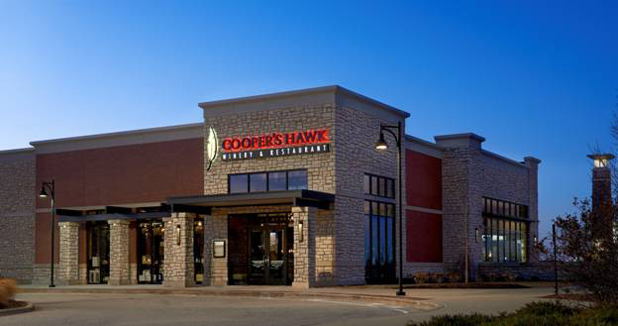2020 has not been a friend to the restaurant industry. Back in March, many experts and leaders planned for a v-shaped recovery, seeing the pandemic as a temporary setback from which they could recover quickly and relatively unscathed. However, the length of mandated shutdowns and the ongoing regional spikes in cases have caused waves of ongoing problems. Restaurants that failed to react quickly and effectively locked their doors forever. Those that have adapted continue to struggle to find a successful path through the maze of complexities while looking for a light at the end of the tunnel.
When we emerge from this upheaval, what will be waiting on the other side? It will most certainly not be the same landscape we knew and loved. Simply opening the doors will not beget buzz and interest in the market, and takeout and delivery will not be second thoughts. There is already a new reality being shaped by critical, permanent shifts in consumer behaviors, and operators must quickly evolve if they are to survive and succeed.
Here are four paths for you to take in adjusting and adapting to the emerging realities.
1. Integrate and communicate health and safety.
It’s no longer enough to tell people your brand has adhered to state and local mandates. Restaurant leaders must be proactive in developing and integrating health-conscious procedural shifts that protect both on- and off-premises guests. That means going above and beyond what the CDC or local officials may suggest and taking into account how you can do better.
Consumers are looking for these health and safety cues at every turn. From social posts through marketing communications, they need to be reassured that their safety is a priority. But that doesn’t mean ticking a box and calling it a day. You must showcase these procedures in action as a part of normal operations. This can include imagery of people serving food with masks and gloves or folks dining with social distancing in place. When combined with smart, transparent messaging, these efforts will go far in assuring guests and pushing the believability of your brand’s promises.
Our world has shifted and will continue to shift, and while many staples may fail, brands still have an opportunity to fortify their foundations and evolve their tactics to stay alive and even thrive.
2. Elevate off-premises dining.
For full-service restaurants, and even some fast casuals, the takeout game was lackluster at best before the pandemic. Cheap utensils were thrown into basic rubber-stamped bags, offering up the food in under-considered packaging. It makes sense as takeout and delivery percentages were bottom of the barrel. The mandated dining room closures changed all of that, making delivery and takeout vital to staying afloat. Poorly considered materials have had a bright, ugly spotlight shone on them, and negatively reflects on the brand.
You have to elevate the off-premises experience by taking the time and consideration to curate details in the same manner you have and would for the on-premises experience. Operators should ask themselves: How can we deliver a similar brand experience through takeout and/or delivery scenarios? What will make our brand shine and set it apart? What will make takeout customers want to come back for more?
3. Simplify off-premises acquisition.
Just as the off-premises experience took a backseat to the in-person experience, so did digital brand elements. Namely, the manner in which people acquire takeout food. Brochure-like websites did nothing more than link to clunky ordering sites at best and supply a phone number at worst. Although a site may be pretty, it does nothing to help patrons with purchasing and acquiring food in a delivery and takeout world. The result is a steep decline in revenue and traffic.
A restaurant brand’s digital purchasing experience needs to be simplified and optimized wherever possible. Whether it’s actually designing the purchasing website to be simple for mobile and desktop or working with your partners to get better food photography and descriptions for items to increase ease of identification and organization, restaurant brands must explore every avenue to increase and maximize the orders through user-centered design. The positive results of which are easily measured as is the return on investment.
Consumers are looking for these health and safety cues at every turn. From social posts through marketing communications, they need to be reassured that their safety is a priority. But that doesn’t mean ticking a box and calling it a day.
4. Bring the brand home.
With many states mandating reduced capacity or entirely closing dining rooms, restaurants effectively lose their biggest brand immersion point. Restaurants are left with a large gap in experience and opportunities to build brand connectivity with guests. To remedy this challenge, operators must ask themselves how they can create brand experiences at home.
With social media and other digital channels, the ability to bring the brand to life outside of its four walls has never been easier or more challenging. Easier because it’s always been approachable and relatively low-cost to push out content that builds brand awareness and immersion. Challenging because it’s not easy to do well and competition is intense.
More and more restaurant brands are flooding the digital space with paid advertising that shows up in social feeds. More budget allocation is necessary to invest due to the steep increase in frequency from competing brands. Additionally, the quality of content is often a point of contention. Brands have to put the consumer and their needs first when creating the content, and that may be quite uncomfortable for those who are used to showing pictures of food as a marketing end-all-be-all.
Our world has shifted and will continue to shift, and while many staples may fail, brands still have an opportunity to fortify their foundations and evolve their tactics to stay alive and even thrive. It’s only a matter of who will make the investment in time, budget and consideration to rise to the challenge and successfully grapple with today’s threats.
Although the threats are new, the core of how we approach them remains the same. The customer, and their wants and needs, are of the utmost importance. Answer them in a way that’s unique to the brand, and you have the makings of a successful effort.




